A Guide to Skin Health: How to Care for Your Skin and Treat Common Skin Problems
A health article about Skin Health from Your Health Online the A to Z directory of dealing with Health Problems & nutritional Self Care Strategies
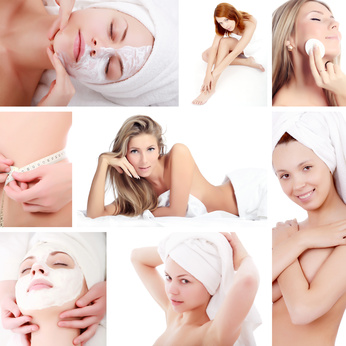
Your skin health is affected by so much every day. It’s the largest organ of the body, and it’s subjected to daily wear and tear.
It covers your whole body and it protects you from heat, light, injury, and infection. In addition, it also regulates body temperature, prevents water loss, and helps absorb vitamin D.
One of the most fascinating things about your skin is that it gives you the ability to feel things through touch.
The skin has an incredible ability to heal, but skin can also be delicate and it’s important to properly care for your skin.
Great skin health is important for appearance, but it’s also important for your health and well-being.
Your skin helps protect you, and protecting your skin helps you maintain a healthier life.
This free online health guide will help you learn the best ways to care for your skin, and it will also share some of the most common skin problems, their causes, and available treatments.
Here you can learn to take care of your skin so it can continue taking care of you.
Introduction to Your Skin

Taking care of your skin is a lifestyle more than a once-and-done activity. Your skin’s health is affected by what you eat, what you do, and where you spend your time.
In this section we’ll be covering some of the best things you can do to keep your skin healthy and vibrant.
Have a Skin Healthy Diet
The first step to having healthy skin is to look at your diet. What you eat has an effect on your skin’s health and the aging process of your skin.
Experts believe that these foods can be some of the worst for skin health:
● Refined sugar or grains
● Fatty meat
● Processed meats
● Dairy for some may cause acne breakouts
● Fast food
● Chips and other greasy foods
● Foods with a high glycemic index
● Artificial sweeteners
● Alcohol
● Spicy foods (for certain people may trigger rosacea)
● Soda
● Baked goods
Of course that doesn’t mean a person can never eat these types of food, but rather that they should be eaten in moderation or rarely, as opposed to a staple of a diet.
For better skin health, these types of foods are recommended:
● Fatty fish or fish high in Omega-3
● Nuts and seeds high in Omega-3 such as walnuts, flaxseed, or chia seeds
● Citruses
● Bell peppers
● Strawberries
● Almonds
● Avocados
● Sweet potatoes
● Red or yellow bell peppers
● Broccoli
● Tomatoes
● Soy
● Green tea
● Red grapes
● Ginger
● Oatmeal (without the extra sugar)
● Artichokes
● Cinnamon
● Quinoa
● Spinach
For some people, allergies to foods can cause dermatitis issues. For instance, common food allergens for people with eczema are milk, fish, and nuts.
For others, foods like soy, peanuts, shellfish, or wheat may cause itchy skin.
To learn more about possible allergies, try an elimination diet or work with an allergist to get tested. Discovering food allergies can help head off a lot of skin health issues.
Reduce Stress
Stress can make it harder for your skin to heal and can cause a host of other skin-related issues. When you’re stressed, your body releases cortisol and adrenaline.
The cortisol triggers increased oil production in the sweat glands, which can lead to acne and other skin problems.
Stress can also cause an inflammatory response which can result in hair loss, hives, and scalp rash. It can also exacerbate issues with rosacea, psoriasis, and eczema.
To reduce stress in your life, try these tips:
1. Exercise
regularly. Exercise is known to lower stress hormones like cortisol, and it
helps you sleep better at night.
2. Drink
less caffeine. Caffeine is a stimulant that can make you anxious or
jittery, especially when consuming a lot. Try cutting back to see if it helps
alleviate some stress in your life.
3. See
your friends and family. Friendship and social connections with people you’re comfortable with
can help lower stress.
4. Laugh.
Laughing is a good way to quickly reduce stress, relax your muscles, and
even boost your immune system.
5. Say
no sometimes. A lot of people feel the need to say yes when someone asks
them to do something. It’s
okay to say no when it really isn’t
feasible or when it would make your life too stressful.
6. Try
prayer or meditation. These activities can help lower stress and reduce
anxiety.
7. Cuddle up. Cuddling and other physical intimacies can help reduce stress and lower cortisol.
Moisturize Your Skin
A daily moisturizer and lotion can help keep skin healthy and hydrated. A moisturizer can help reduce the risk of developing skin issues and may help slow the aging process.
You can try different moisturizers that best suit your age or skin type. You can also ask a dermatologist to recommend a good moisturizer to suit you.
Be Gentle With Your Skin (And Skin Routine)
Treating your skin gently is another way to keep it healthy. This means avoiding harsh creams or soaps, keeping the shower temperature warm instead of hot, and patting yourself dry with a towel instead of rubbing off the water.
Sometimes when people have skin issues, like acne, for example, the instinct is to vigorously scrub the skin to try to wash off excess oils or bacteria.
Unfortunately, this can damage the skin and can increase the risk of a breakout rather than reduce it.
Other ways to be gentle with your skin are to choose a gentle facial cleanser, have days without makeup, and remove your makeup before you go to bed at night.
Quit Smoking
Smoking can cause a number of issues that lead to poor skin health.
Toxins contained in cigarettes can lead to premature aging and can contribute to skin cancer.
Smoking can increase the risk of acne, psoriasis, and eczema. It can even impair your skin’s ability to heal.
Quitting smoking can reduce the risk of developing skin problems, and once you quit it can give your body a chance to heal and reverse some of the negative effects of smoking.
Get Your Beauty Rest and Protect Your Skin
Lack of sleep can do a number on your skin health. Sleep is an important time for skin health because it can rebuild and heal from daily wear.
When you sleep, your skin regenerates and prepares for the next day.
Getting enough sleep helps your skin stay moisturized and heal from things like daily UV exposure.
The Importance of Sunscreen
Although many people enjoy getting a suntan in the summertime, protecting your skin from UV rays is extremely important for overall skin health.
People can develop skin cancer in places that aren’t exposed to the sun, but it’s far more likely to appear in areas that receive a lot of sun. Too much sunshine can also lead to premature aging and wrinkles.
Some sun exposure is healthy, and the sun can provide much-needed vitamin D. It can also boost your mood, help you sleep at night, and can help with some skin issues like psoriasis and eczema.
Too much sun, however, can do real damage to your skin. That’s why it’s so important to wear sunscreen during extended periods in the sun and to reapply often to reduce the risk of sunburn.
All skin types need sunscreen, but those with very light complexions that burn easily in the sun are the most at risk.
You can also reduce the risk of sun exposure by avoiding the times of day when the UV rays are the strongest, finding a shady spot, or wearing protective clothing like sun hats, sunglasses, or long-sleeved shirts.
Types of Diseases or Skin Problems (And How to Treat Them)
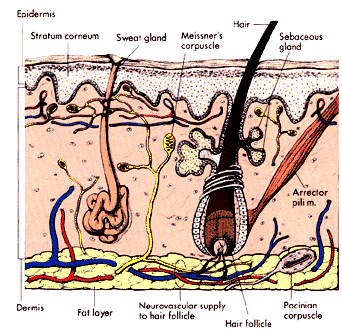
1. Acne Vulgaris (Acne)
Acne is a common and chronic skin disease that affects millions of Americans every year. The word “vulgaris” means common, and it’s something that the majority of people experience in their lifetime.
This common type of acne is usually seen in adolescents, but many adults also get it from time to time and some adults continue to have severe cases of it.
Acne vulgaris is usually found on the face, but it can also appear on the chest, back, neck, shoulders, and occasionally other places on the body.
It appears as pimples, or red spots, on the face and body and may have whiteheads or blackheads.
This skin disease is caused by the pores of the skin becoming blocked with things like oil, dead skin, or bacteria.
The body produces oil called sebum, and when the pore is blocked the sebum is unable to come out which can cause a pimple to form.
Common reasons for acne are:
● Hormonal changes that may appear during puberty, menstrual cycles, or pregnancy
● Certain medications
● Stress
● Genetics
● Wearing hats or headgear
● Hot humid weather
● Some creams or cosmetics, especially if they’re heavy
● Working in a job that puts you in contact with grease, such as working the fryer at a restaurant
● Foods such as dairy or refined sugar may cause acne to be worse, but greasy foods are not linked with breakouts, despite popular opinion
How to treat acne vulgaris:
● Soap
and water: Using a gentle soap with gentle application can help reduce the
risk of future outbreaks. However, roughly scrubbing the face or washing the
face too many times a day (more than twice) can cause additional problems,
especially for those with sensitive skin.
● Over-the-counter
acne cleansers: There are many products made for reducing acne. Common
ingredients in these cleansers are benzoyl peroxide, salicylic acid, and
glycolic acid. These ingredients may also be found in creams that you can apply
to trouble areas.
● Prescriptions
from a dermatologist or medical doctor: If your acne is severe or
persistent, you can reach out to a doctor or dermatologist and they might
prescribe a medication. Common medications for acne include:
○ Antibiotics
○ Retinoids
○ Azelaic acid
○ Salicylic acid
○ Dapsone
○ Birth control
○ Spironolactone
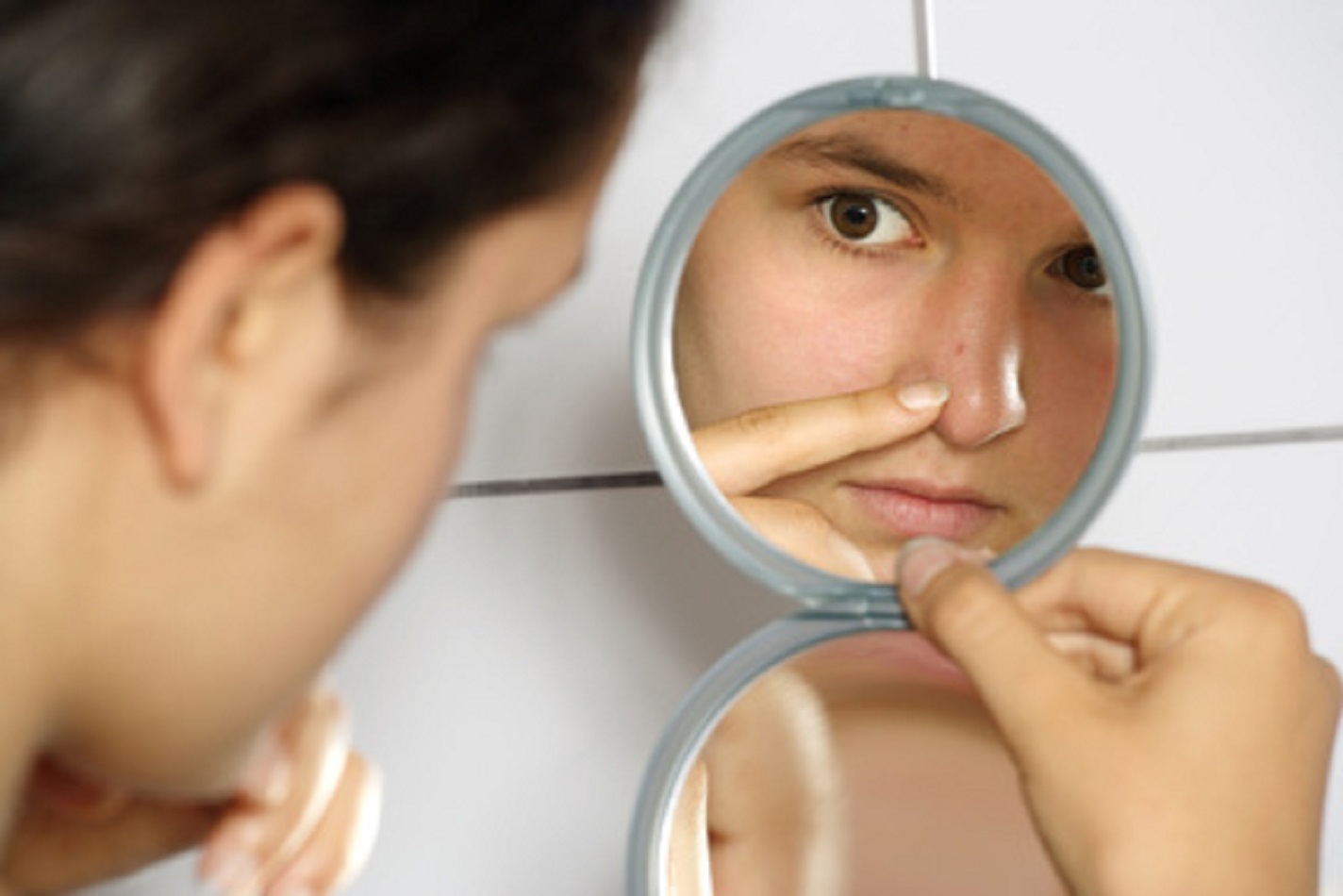
2. Atopic Dermatitis (Eczema)
The most common form of eczema is atopic dermatitis, and it affects millions of people around the world.
Eczema is an immune response that results in damage to the skin that leaves rashes. These rashes can be itchy and are often brown, gray, purple, or red.
People with atopic dermatitis often suffer from it throughout their lifetime.
It can begin in early childhood and continue into adulthood, with flare-ups happening sometimes without a known trigger.
Eczema is often itchy, but it can also be painful and uncomfortable and may interfere with sleep.
If it is severe, it may ooze liquid or begin bleeding. This can lead to other skin infections, worsening the problem.
Risk factors for atopic dermatitis include:
● Family history
● Other allergies (people with allergies are more likely to develop eczema)
● Asthma (people with asthma are also more likely to develop eczema)
Common triggers for atopic dermatitis flare-ups are:
● Lengthy hot showers or baths
● Sweating
● Heat
● Cold dry weather
● Certain soaps, detergents, or household cleaners
● Exposure to allergens
● Stress
● Wool
● Some synthetic fibers
Treatment for atopic dermatitis:
Atopic dermatitis has no known cure, but there are things that you can do to lessen the symptoms.
If you’re experiencing a flare-up, you may be prescribed a topical steroid or calcineurin inhibitor. An antibiotic may be prescribed if the eczema has turned into a bacterial infection.
Phototherapy, which is a type of therapy using ultraviolet light, may be administered by a doctor.
In severe cases, an oral steroid may be prescribed, or a new medication called Dupilumab (Dupixent) may be injected if other methods do not work.
Some people looking for complementary natural solutions may try probiotics, supplements, or Chinese herbs.
One of the best ways to manage atopic dermatitis is to avoid triggers. This means:
● Using gentle soaps that don’t cause a reaction
● Taking shorter baths or showers
● Managing stress
● Using a humidifier in the home
● Finding a good moisturizer and using it often
● Avoiding known allergens when possible
3. Sunburn
Sunburn is extremely common during hot summer days, and it causes the skin to be red and painful.
When a person is exposed to too much Ultraviolet (UV) light it results in sunburn, and this can come from the sun or an artificial source of UV.
Those who often have intense UV exposure can develop additional skin damage like wrinkles, dark spots, sagging skin, leathery or dry skin, moles, rosacea, or melanoma.
Extreme sunburn may result in sun poisoning. Symptoms of sun poisoning are blistering, headache, fever, chills, nausea, and dehydration.
Some treatments for sunburn are:
● Frequent cold baths or showers
● A moisturizer that contains aloe vera
● Ibuprofen or tylenol for fever, pain, or inflammation
● Extra water (dehydration is common with extended sun exposure)
● Cover up when going out in the sun to reduce the risk of further exposure
● In very severe cases, a doctor may prescribe a burn cream
4. Herpes Labialis (Cold Sore)
Herpes labialis is the technical name for a common skin condition known as a cold sore. A cold sore is an infection that forms around the mouth and produces painful sores.
The sores can appear on the lips or face. In some rare cases, these sores may develop inside the mouth or throat, on the nose, or fingers.
Cold sores are caused by a virus called herpes simplex. The virus is highly contagious and can be spread through close contact.
Although the sores often clear up in a few weeks, they may return at a future date.
Once contracted, the virus remains dormant in the body and can reactivate again causing new sores to form.
Some people report outbreaks of cold sores when their immune system is weak, such as when they have a cold or other sickness.
Before a cold sore appears, you may experience a burning or tingling sensation around the mouth. Other symptoms may include fever, muscle aches, or swollen lymph nodes.
According to the World Health Organization, it’s estimated that 67% of people under 50 (or 3.7 billion people) have herpes simplex virus type 1 (HSV-1) globally.
Although HSV-1 is extremely prevalent, not everyone who has it gets cold sores.
This may be due to a genetic mutation related to the immune system that makes some people more prone to getting cold sores than others.
Stress, sickness, and general unwellness can also raise the risk of cold sores.
Other risk factors for herpes labialis are:
● Sun exposure
● HIV/AIDS
● Weakened immune system
● Severe burns
● Eczema
● Chemotherapy
● Dental surgery
● Medications that suppress the immune system
● Menstruation
● Physical injury
How to treat cold sores:
● Cold
sores often clear up on their own in a few weeks, but the pain can be
uncomfortable. To help relieve the pain, you can take ibuprofen or Tylenol. An
ice compress can also be used to reduce pain, and over-the-counter creams can
also help.
● To
reduce the risk of cold sores, you can use sunscreen to limit exposure to the
sun, which raises your chances of getting a new cold sore outbreak. Using lip
balms often can help, as can lowering your stress or other things that might
weaken your immune system.
● Once
a cold sore appears, or when you begin feeling the tingling sensation that
indicates an outbreak, there are certain things you can do to quicken the
healing process.
○ Over-the-counter
antiviral medications like docosanol or benzyl alcohol may help.
○ Aloe
vera is known to reduce pain and may also quicken the healing process as it has
some anti-viral properties.
○ Peppermint
and tea-tree essential oils have been proven to help cold sores heal more
quickly in some research studies. Oils should be diluted as these essential
oils will burn sensitive areas around the mouth and face at full strength.
○ Vitamins
E and C might help fight cold sores.
○ A doctor may prescribe antiviral medications to patients with frequent cold sores.
5. Herpes Zoster (Shingles)
Herpes zoster, otherwise known as shingles, is an extremely painful viral infection that causes a blistering rash.
A shingles outbreak can occur anywhere on the body but is commonly found as a strip of blisters either on the left or right side of the torso.
The virus responsible for shingles is called the varicella-zoster virus, and it’s the same virus that causes chicken pox.
Those who had chicken pox in their youth retain the virus in a dormant state. Years later, that virus may activate again causing a shingles outbreak.
Pain is usually the first indication of an outbreak of shingles. Other signs may be burning, numbness, or tingling.
After the initial symptoms, a fluid-filled rash will appear.
The rash usually lasts around one week before it begins to try up and eventually disappears.
There are currently two shingles vaccines available: Zostavax and Shingrix.
The CDC recommends the Shingrix vaccine.
At this time, this vaccine is only available to those who are over 50.
Risk factors for shingles include:
● Having chickenpox earlier in life
● Age is a big factor. Although children, teenagers, and young adults can develop shingles, it often doesn’t manifest until after age 50.
● A weakened immune system
● HIV
● Cancer
● Cancer treatments like chemotherapy or radiation
● Taking medications designed to help organ donors not reject a transplant
● Stress
● Serious physical injury
Treatment for shingles may include:
● Medication to speed up the healing process.
These medications work best if you catch the
shingles outbreak early. Common medicines prescribed for shingles are:
○ Acyclovir (Zovirax)
○ Famciclovir (Famvir)
○
Valacyclovir
(Valtrex)
● To
help alleviate the symptoms of shingles, common treatments are:
○ Cool compresses
○ Ibuprofen or tylenol
○ Prescription pain medications
○ Medicated lotions
○ Calamine lotion
○ Lukewarm
baths with oatmeal
● A shingles vaccine may help reduce the risk of having a shingles outbreak.
Children can be immunized with a chickenpox vaccine to help them avoid contracting the virus in the first place.
People who have been immunized are
still at risk of getting shingles, but the risk is greatly reduced.
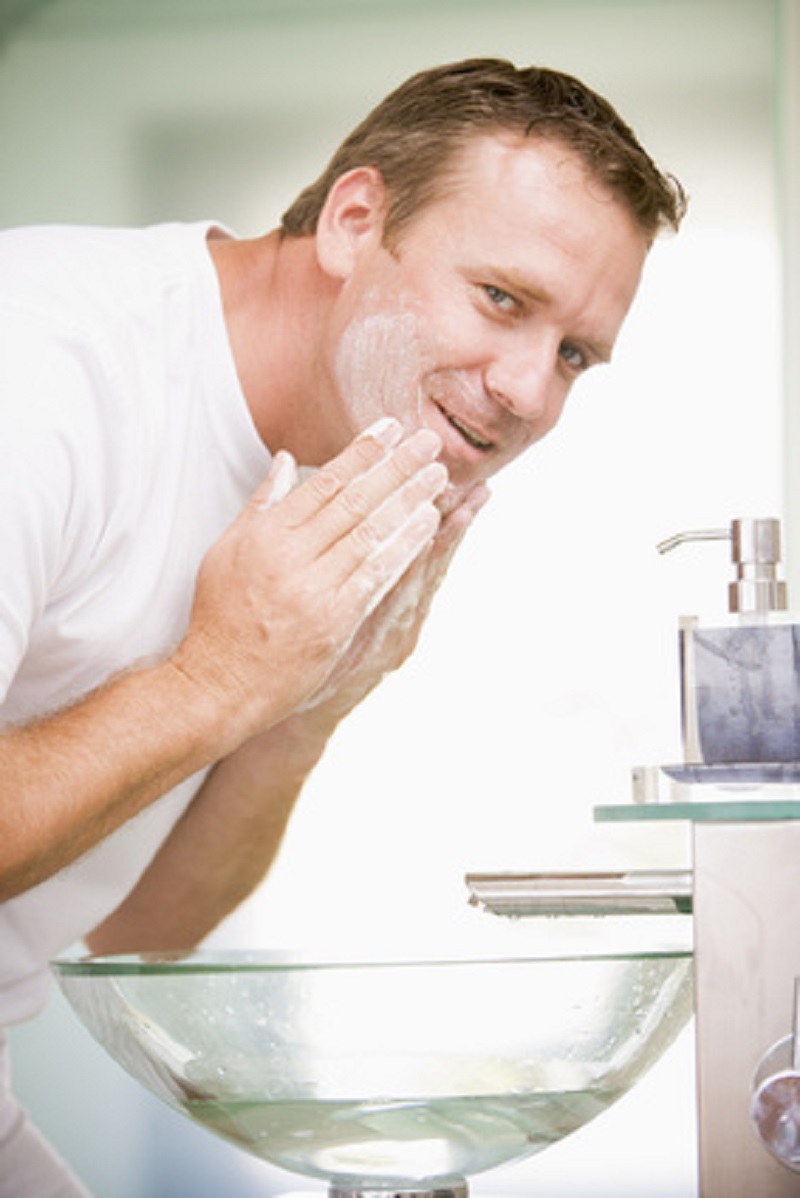
6. Verruca (warts)
Verruca, or warts, are growths on a person’s skin caused by the human papillomavirus (HPV).
● Common warts: most often appear on fingers and toes.
● Plantar warts: found on the bottom of the foot. These warts grow inward instead of outward.
● Flat warts: usually discovered on the face, thighs, or arms. They’re flat in appearance.
● Periungual warts: these grow under toenails and fingernails.
● Filiform warts: appear around the mouth, eyes, nose, or sometimes on the neck or chin. They are long thin projections of skin.
Warts are usually harmless to humans, but they can be painful and embarrassing.
They’re also easy to spread which is why treatment of warts early on is important.
Warts live on the skin and are often not detected by the immune system.
Many treatments available for treating warts are meant to initiate the immune system to fully remove the virus.
Risk factors for developing warts:
● Injury to the skin
● Skin infections
● Children and teenagers with underdeveloped immune systems are more at risk of getting warts
● A weakened immune system at any age can increase the risk of getting warts
● Going to public swimming pools
● Coming in contact with another person’s warts
● Sharing towels or washcloths
● Biting your nails
Treatment for warts:
● Salicylic acid is an over-the-counter agent that removes the layers of the wart a little at a time to help remove it.
The doctor may also prescribe a stronger form of
this than you can buy at the store.
● Freezing or cryotherapy involves using liquid nitrogen to freeze layers of skin affected by the wart.
This will cause a blister at the area of the wart and hopefully
will stimulate the immune system to remove the wart.
● Trichloroacetic
acid is another agent a dermatologist may try if other methods are not
effective. Treatments would be reapplied weekly.
● A
dermatologist may try using surgery to remove the wart, but this may leave
scarring.
● Laser
treatment is another option and involves the dermatologist cauterizing tiny
blood vessels in the infected area. This can also cause scarring.
● If you search the internet, there are scores of home remedies for warts. They may work, but many of them have little scientific evidence.
Warts may also heal on
their own, but they may take years, and some stick around for longer.
○ A common home remedy for warts is sanding down the wart with sandpaper and then applying duct tape to the affected area for 24 hours a day.
There is some evidence that this method does work for some people and may be worth trying before attempting more painful or intrusive types of treatment.
7. Psoriasis
Psoriasis is an autoimmune disease that causes skin cells to multiply faster than normal. This results in a buildup of cells that create scaly patches of skin.
The patches are often red and inflamed and can appear on the hands, feet, neck, scalp, and face.
They’re whitish in color and can sometimes crack and bleed. In some rare cases, psoriasis can appear around the nails, mouth, and near the genitals.
This skin disease affects approximately 125 million people worldwide which is about 2-3% of the population.
Risk factors or triggers for psoriasis:
● Infections including skin infections and strep throat
● Skin injuries like sunburns, scratches, or even vaccination sites
● Certain medications like lithium, beta-blockers, or quinidine
● Genetics may also play a part. When one parent has psoriasis, there’s a 10% chance of developing it, but if both parents have it that rate increases to 50%
● Heavy alcohol consumption
● Stress
● Smoking
Treatment for psoriasis:
There is no known cure for psoriasis, but a doctor can prescribe medication or therapy that can help minimize the effects of the symptoms.
● Topical
treatments may be applied such as steroid creams, salicylic creams, or a drug
known as calcipotriol, a synthetic form of vitamin D that can control the
growth of skin cells.
● Light
therapy such as sunlight, narrowband UVB light therapy, broadband UVB light
therapy, excimer laser, or psoralen plus ultraviolet A. Phototherapy is known
to slow down the fast-growing cells that cause the scaly patches of psoriasis.
● Immunosuppressants
can reduce the severity of the autoimmune reaction in psoriasis. The downside
to this is that it affects your immune system negatively when trying to fight
off other infections or diseases. An immunosuppressant called cyclosporine may be
prescribed for severe psoriasis.
● Steroids
● Retinoids
● Moisturizers
8. Tinea
Tinea is a fungal skin infection that is better known by its more common names: ringworm, jock itch, and athlete’s foot. Each one of these infections is caused by a fungus called dermatophytes.
The fungi love moist, warm areas and can appear almost anywhere on the body, but depending on the location may have a different name.
For example, if it’s found on the soles of the feet or around the toes it’s called athlete’s foot.
Depending on where it appears on the body, the symptoms may be different.
For example, tinea that’s found on the body or the scalp may have a ring-like appearance, hence the name ringworm.
Ringworm is a fungal infection, not a worm, but it gets its name because it resembles a worm in the shape of a ring.
Jock itch infects the upper thighs and groin area and can cause red, flaky, cracking skin.
This fungal infection can also be uncomfortable and itchy.
Causes or risk factors for tinea:
● Sharing personal items with someone who has tinea
● Coming in contact with a person or animal that has tinea
● Walking barefoot in public locker rooms or showers
● Sharing sports gear
● Wearing tight clothing that is restrictive
● A weakened immune system
● Living in a warm, muggy climate or frequently sweating
Treatment for tinea:
● Most
outbreaks of tinea can be treated with topical non-prescription medications
such as clotrimazole, miconazole, and terbinafine.
● When
tinea affects the scalp, an oral antifungal prescription is often necessary.
● A doctor may prescribe a stronger prescription antifungal cream for faster results
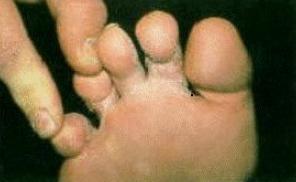
9. Rosacea
Rosacea is a skin condition that causes redness on the cheeks, nose, chin, and forehead.
It’s a chronic skin disease and affects over 400 million people worldwide, and around 14 million people in the United States.
The cause of rosacea is unknown and there’s no known cure for it.
In addition to causing red skin, rosacea can also produce small red bumps that look like acne.
Outbreaks of rosacea are often cyclical, with it coming and going. Sometimes these flare-ups can last for months at a time.
While anyone can be at risk for having rosacea, it most commonly affects light-skinned middle-aged women.
Causes or risk factors of rosacea:
The exact cause of rosacea is unknown, though it’s probably a mixture of environment and genetics. Certain things might cause a flare-up.
Among these factors are:
● Eating spicy food
● Sun exposure
● Extreme temperatures
● Emotions
● Exercise
● Alcohol
● Any medications that dilate blood vessels (such as blood pressure medication)
● Being fair-skinned and blue-eyed
● Having a Celtic or Scandinavian ancestry
● Possibly an immune system response toa bacterium on the skin called bacillus oleronius
● A mite on the skin called Demodex normally lives on people’s skin but might affect some people more
Treatment for rosacea:
While there is no cure for rosacea, there are treatments that can alleviate or lessen symptoms.
● Medications
such as topical creams, oral antibiotics, or oral acne drugs can help with
symptoms or flare-ups of rosacea.
● Lasers
may be used to remove large blood vessels
● Dermabrasion
is administered by a dermatologist or plastic surgeon, and it involves sanding
off the top layer of skin. This may leave the skin looking red and swollen at
first, but eventually, the skin will heal and often the skin beneath will be
smoother.
● Electrosurgery
can treat small red blood vessels that appear on the face.
● Managing triggers is another way to help relieve the symptoms of rosacea.
The triggers
for one person may be different than another, so it’s helpful to pay attention to the things that cause
flare-ups for you.
● Skin care can help with rosacea including using a mild face cleanser and treating the skin gently.
Avoid using harsh soaps or being abrasive with the skin.
10. Skin Cancer
Skin cancer is the most common form of cancer in the United States, and approximately 9,500 people are diagnosed with skin cancer every day.
There are three major types of skin cancer which are basal cell carcinoma, squamous cell carcinoma, and melanoma.
While all types of cancer are serious, melanoma is the most concerning of the three.
Melanoma is less common, but it is more likely to spread to other organs if it’s not treated at an early stage.
Skin cancer is caused by the growth of abnormal cells in the epidermis.
This growth is often triggered by exposure to the sun or UV lights, but it can develop anywhere on the body, even in places that rarely see the sun.
An Overview of the Three Major Types of Skin Cancer
● Basal Cell Carcinoma - The most common form of skin cancer, as well as the most common type of all cancers. Basal cells are responsible for producing new skin cells as the old ones die off.
In the case of basal cell carcinoma, these cells are produced abnormally and uncontrolled.
The cancer will appear as open sores, pink growths, shiny bumps, a brown, black, or blue lesion, or a white and waxy scar-like lesion.
● Squamous Cell Carcinoma - The second most common form of skin cancer is squamous cell carcinoma.
It’s a slow-growing skin cancer that can’t spread to tissues, bones, or lymph nodes.
Squamous cells naturally shed as new cells are formed. This type of cancer is caused by DNA damage from ultraviolet radiation and appears as red patches, open sores, wart-like sores, or a growth with a depression in the middle.
● Melanoma - Though not as common as the other two types of skin cancer, melanoma is by far the most dangerous.
In this type of cancer, cells called melanocytes that are responsible for producing melanin begin to divide uncontrollably.
This overproduction of melanin cells can change the appearance of moles or produce brown spots or growths on the skin.
Early detection is key with melanoma as it can spread to other parts of the body.
According to the Skin Cancer Foundation those who discover melanoma early, before it spreads, have a 99% chance of survival.
Those numbers drop to 66% if the cancer has reached lymph nodes, and 27% if the cancer has developed in distant organs.
Risk factors for developing skin cancer are:
● Lighter natural skin color
● Skin that burns easily or freckles in the sun
● Having blue or green eyes
● Having blonde or red hair
● A genetic history of skin cancer
● Having had skin cancer in the past
● Older age
● Exposure to UV rays
● Something that causes an immune suppression such as having an organ transplant
● Smoking
● Chemical exposure
● HPV infections
Treatments for basal cell carcinoma:
● Surgery
is the most common treatment for basal cell carcinoma. The two main types of
surgery are surgical excision and Mohs surgery.
○ Surgical
excision involves the doctor cutting out the cancerous section of skin plus a
little bit of the healthy skin that surrounds it.
○ Mohs
surgery is when the doctor removes the skin layer by layer and examines it for
cancer cells.
● Curettage
and electrodessication (C and E) involve scraping the skin and then using an
electric needle to sear the base of the cancer.
● Radiation
therapy might be used if the doctor is concerned the cancer may return.
● Freezing the cancer with liquid nitrogen is another type of treatment, and it may be used after the doctor scrapes away the top layers of skin.
Treatments for squamous cell carcinoma:
● The treatments for squamous cell carcinoma are very similar to those for basal cell carcinoma. In cases where the cancer has spread, chemotherapy or immunotherapy may be used.
Treatments for melanoma:
Treatment for melanoma is largely based on what stage it is.
● Melanoma
at stage 0 will likely be treated with surgery to remove the layer of skin
affected by cancer cells.
○ Mohs
surgery may be used for sensitive areas like the face.
● Stage I and II melanoma are often treated with wide excision surgery.
The doctor may
also run tests to see if the cancer cells have developed in nearby lymph nodes.
● At stage III melanoma the cancer has already spread into the lymph nodes. This stage requires wide excision surgery as well as lymph node dissection.
Additional treatments may be offered such as radiation or targeted therapy
drugs.
● Stage IV melanoma is when the cancer cells have spread to distant lymph nodes or organs.
Treating melanoma at this stage involves surgery, and may also include radiation therapy, immunotherapy, targeted therapy, or chemotherapy.
Vitamin & Nutrient Associations

Even when we try to eat well, we're disadvantaged. The nutritional
content of most food has been compromised over the years, not only by
deficient soils and modern production, transportation, storage and
processing methods, but also by the enormous amounts of chemical and
artificial substances added to promote growth, storage life, taste and
appearance.
It's for this reason that more and more medical authorities are
advocating the use of vitamin and mineral supplements. However, finding
them in the right combination can be both confusing and costly.
The nutrition products I am going to recommend you make use of knowledge
gained from the botanical world's 6,000 year history. They incorporated
health building nutritional herbs with the best modern technology to
help our bodies cleanse and detoxify so that the cells - the tiniest
living units - can be as fully nourished as possible.
This allows the cells to grow,
repair and to perform their functions with the best possible efficiency
so that we feel and look better and are more able to prevent and fight
disease. Once the body begins to clear itself of toxins it can more
efficiently absorb nutrition.
Further reading through our articles on health issues will give
you a body of information that will help you decide what options you
have to deal with the underlying causes of your problem through giving
your body the nutrition products that will assist you body to heal from
the inside out.
You can visit our health food products page here: Herbalife Health Nutrition Supplements and learn more about our core nutrition program, the Cellular Nutrition Advanced Program and also check out these targeted products, Florafiber to replace your healthy flora and Aloe Vera Juice to help cleanse your system.
Also using NouriFusion Skin Essentials will clearly help provide you with excellent skincare support for your ‘outer nutrition’.
We wish you well in your search for solutions to this problem and your movement towards better health in all areas.
More Resources available about Skin Health
Skin health comes down to treating your skin like a treasure. It’s there to protect you, but it also needs to be cared for.
Wear sunscreen when you’re outside for an extended period of time, even if it’s cloudy or overcast.
Get plenty of rest at night, eat a healthy diet, and reduce stress when possible. If you suspect a food allergy, follow up with an allergist and eliminate foods that may cause hives or flare-ups.
Be gentle with your skin by moisturizing daily and skipping harsh soaps or cleansers. Avoid the tendency to roughly rub your skin or use abrasive cloths.
If you’re concerned about your skin, or if you’ve discovered something unusual or questionable, be sure to contact a doctor or dermatologist early.
They can help diagnose skin issues, including skin cancer, and help treat any skin conditions.
Treating your skin well has beauty benefits, but it also has incredible health benefits for the course of your life.
Resources:
https://www.medicalnewstoday.com/articles/320071#1.-Eat-a-healthful-diet
https://www.webmd.com/skin-problems-and-treatments/sun-poisoning
https://www.cancer.org/cancer/melanoma-skin-cancer.html
https://www.aad.org/media/stats-skin-cancer
https://medlineplus.gov/warts.html
https://www.betterhealth.vic.gov.au/health/conditionsandtreatments/warts
https://www.mayoclinic.org/diseases-conditions/psoriasis/symptoms-causes/syc-20355840
https://www.healthline.com/health/psoriasis/risk-factors#risk-factors
https://medlineplus.gov/tineainfections.html
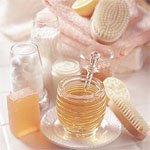
Below here are examples of Health Success
Results other people have had with using a self care strategy for
dealing with this condition:
We would be very interested to hear your result stories with your problem if you are using some of our nutrition products. To send us your story just fill out the form below.
Share *YOUR* remedy & health success story!
We are on a world-wide mission to source and tell our readers about as many as possible of the natural remedies & self care strategies available, so please help us to grow and improve our health information on this subject.
If you have a proven home remedy or natural treatment or have a great Health Success story, we would love to share it with our readers.
And as a special "Thank You" for your contribution, we will give you our special edition "Health Success Report"!
(When you submit this article you agree to the ***GENERAL RELEASE below this form)

*** GENERAL RELEASE AND ASSIGNMENT
For good and valuable consideration, the receipt
and legal sufficiency of which is hereby acknowledged, I ("I", "me",
"my") hereby agree as follows:
1) I hereby grant to Warren Tattersall, his successors, assignees and
licensees the unlimited right, but not the
obligation, to use any statements made by or attributed to me (my
"Statements") as well as my name, voice, and likeness, performance,
personal characteristics and other identifying information (jointly and
severally with the Statements and the photographs referenced in
Paragraph 2 below, my "Personal Characteristics") in and in connection
with the advertising, promotion, marketing and other exploitation of
Herbalife products or Warren Tattersall’s services in any and all
languages and media, now known or hereafter devised, throughout the
universe in perpetuity.
2) If I supply Warren Tattersall with photographs of myself on this date
or any date subsequent, I agree that Warren Tattersall may use such
photographs to the full extent provided above, I warrant and represent
that I am the person depicted in the photograph, I am the owner of the
photograph, I have the authority to grant the permission and rights
granted herein, and no one else’s permission is required to grant such
rights, and I understand that the copy of the photograph(s) I supply to
Warren Tattersall will not be returned.
3) I understand that Warren Tattersall is not obligated to use my
Personal Characteristics as permitted herein or, if commenced, to
continue with such use in any territory. I acknowledge and agree that
Warren Tattersall may make my Personal Characteristics available to
Warren Tattersall’s independent distributors to use as permitted above.
4) In undertaking the act of submitting my words and images through
www.TheHealthSuccessSite.com I understand that I am agreeing the terms
and conditions of this agreement
I have read this entire General Release and Assignment and fully
understand his contents. I likewise understand that this document shall
remain in full force and effect unless/until I request that it be
terminated, and that any such request must be made in a signed writing.
By signing below, I hereby acknowledge and agree to the
foregoing.
I understand that in submitting my material for publication I am granting the rights to reproduce this material on the internet or in other form and I have read the conditions above
BACK TO “Your Health Online”
the A to Z directory of dealing with Health Problems & Self Care Strategies for natural remedies to your health issues.
Terms of Use | Privacy Policy | Disclaimer | Site Map
====================================================
SITE DISCLAIMER: Do these products “cure” anything? Of course
not… but it stands to reason that if you cleanse your body and feed it
the finest nutrition available, giving it everything it needs in
balance, on a daily basis, that your body will do what nature intended,
and give you the best possible chance to fend off sickness and disease.
This Skin Health information is not presented
by a medical practitioner and is for educational and informational
purposes only. The Skin Health content is not
intended to be a substitute for professional medical advice, diagnosis,
or treatment. Always seek the advice of your physician or other
qualified health provider with any Skin Health
questions you may have regarding a medical condition. Never disregard
professional medical advice or delay in seeking it because of something
you have read.
The Skin Health resources on this site are not intended to be a substitute for professional advice. While all attempts have been made to verify Skin Health information provided in this publication, neither the author nor the publisher assumes any responsibility for errors, omissions or contrary interpretation of the web site Skin Health subject matter herein.
The site Skin Health contents are solely the opinion of the authors and should not be considered as a form of advice, direction and/or recommendation of any kind. If expert advice or counseling is needed, services of a competent professional should be sought. The author and the Publisher assume no responsibility or liability and specifically disclaim any warranty, express or implied for any Skin Health products or services mentioned, or any techniques or Skin Health practices described.
The purchaser or reader of this Skin Health publication assumes responsibility for the use of these materials and information. Neither the author nor the Publisher assumes any responsibility or liability whatsoever on the behalf of any purchaser or reader of these Skin Health nutritional supplements materials. There is no guarantee of validity of accuracy. Any perceived slight of specific people or organizations is unintentional.
This website and its
creators are not responsible for the content of any sites linked to.
Since natural and/or dietary supplements are not FDA approved they must
be accompanied by a two-part disclaimer on the product label: that the
statement has not been evaluated by FDA and that the product is not
intended to "diagnose, treat, cure or prevent any disease."
====================================================
the A to Z directory of dealing with Health Problems & Self Care Strategies for natural remedies to your health issues.

Subscribe to get your weekly "Health Success Magazine" with a new complete & comprehensive Health Report in every edition!

to “Your Health Success”
our weekly F’R’E’E’ Newsletter
If you would like a free no-obligation private consultation or to contact Warren Tattersall for more information, please click here >> Contact Us



